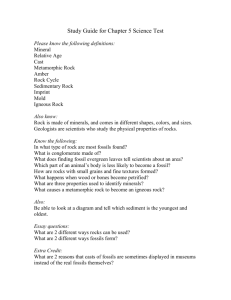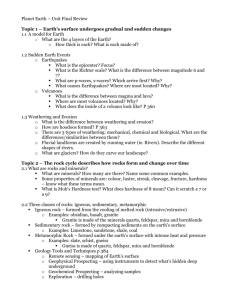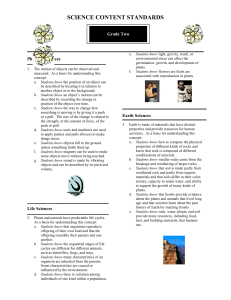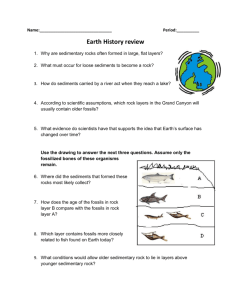6th Grade Science Interim Assessment 2 Study Guide
advertisement
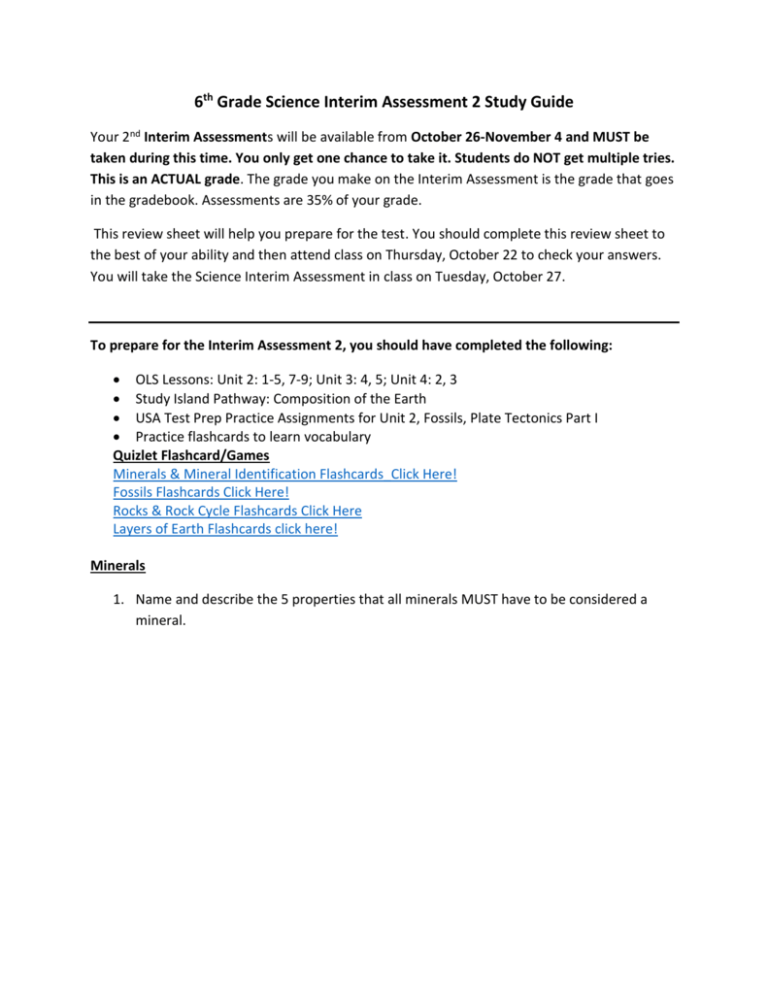
6th Grade Science Interim Assessment 2 Study Guide Your 2nd Interim Assessments will be available from October 26-November 4 and MUST be taken during this time. You only get one chance to take it. Students do NOT get multiple tries. This is an ACTUAL grade. The grade you make on the Interim Assessment is the grade that goes in the gradebook. Assessments are 35% of your grade. This review sheet will help you prepare for the test. You should complete this review sheet to the best of your ability and then attend class on Thursday, October 22 to check your answers. You will take the Science Interim Assessment in class on Tuesday, October 27. To prepare for the Interim Assessment 2, you should have completed the following: OLS Lessons: Unit 2: 1-5, 7-9; Unit 3: 4, 5; Unit 4: 2, 3 Study Island Pathway: Composition of the Earth USA Test Prep Practice Assignments for Unit 2, Fossils, Plate Tectonics Part I Practice flashcards to learn vocabulary Quizlet Flashcard/Games Minerals & Mineral Identification Flashcards_Click Here! Fossils Flashcards Click Here! Rocks & Rock Cycle Flashcards Click Here Layers of Earth Flashcards click here! Minerals 1. Name and describe the 5 properties that all minerals MUST have to be considered a mineral. 2. Complete the blank sections of the chart on mineral identification. Identifying Minerals Easy to see, but least useful; Many are similar in color or can change colors due to impurities. Luster Color of mineral in powder form- It will always be the same, even it its external color varies Measure of resistance to scratching. • Harder substance will scratch softer substance • Mohs Hardness Scale ranks 10 minerals from softest to hardest. Specific gravity The same mineral has same crystal structure. Geologists classify minerals based on number and angle of crystal faces. Cleavage or fracture Special features Rocks are composed of ________ or ___________ minerals and are classified by their origin or how they are formed. 3. Complete the Chart. Type of Rock How is it formed? Physical Properties/formation Rocks are classified by texture and composition. How are each rock type classified? Give details and examples. Classified by crystal size- 2 types Other characteristics Magma or Dominated by lava cools silica minerals 1. __________ ___ _____rock: and crystallizes. Cool slowly underground (inside the earth) so they form large crystals and are coarse grained. An example is granite. 2. ___________ __ rock: Cool quickly at the surface (they exited the earth) so they have either no crystals or small crystals because they cooled so fast. They are fine grained and an example is basalt (most abundant rock on earth, found on the ocean floors) Examples of extrusive rocks: If cooled instantaneous, crystals do not form and it is ________. An example is _________. Sedimentary Rock Another extrusive igneous rock that cools quickly causing gas bubbles and creating holes in the rock during formation is ________. Classified by _____________________ ___________: rocks form when bits of weathered rocks are cemented together. They differ from each other due to size of rock fragments that make up the rock ___________ sedimentary rocks: form when dissolved minerals crystallize We can sometimes see clues to our past in sedimentary rock. Fossils are found in this type of rock. ___________ sedimentary rocks: forms when the remains of plants and animals are deposited in thick layer. Metamorphic Rock Existing rock undergoes intense ______ and _________ Classified according to arrangement of the grains that make up the rock. Extreme pressure can cause mineral grains to line up in flat, parallel layers, or bands, called foliation. _________ _______may split apart along these bands. Looks like stripes! Formed from existing _________, ___________, or other ____________ rock A rock that ____________ ________ mineral grains are has arranged randomly and do not split apart in changed its layers form! __________ is the process that presses sediments together building up over many, many years ___________ is the process when dissolved minerals crystallize and glue the sediment together _____________ is the process of converting sediments into solid rocks through compaction and cementation 4. Draw and label the Rock Cycle Diagram. Choose a rock and explain how it might travel through the rock cycle. (Use back of paper if needed) Fossils Fossils are traces of preexisting life on Earth, which may exist in the form of shells, bones, or impressions of plant leaves and soft body parts. 1. What type of rocks are fossils found in and why? 2. Define: a. Body fossil b. Trace fossil c. Mold fossil d. Cast fossil 3. Fossils found in lower layers of sedimentary rock are____________ than fossils found in upper layers of sedimentary rock. List the fossils in order from oldest to youngest in the diagram. 4. List 4 things scientists can learn by studying fossils? 5. How are fossils used to date rocks? 6. A shark fossil was found in the middle of Kansas, explain how this happened? 7. Which type of body parts are most likely to become fossilized and why? Composition of the Earth 1. Label the layers of the Earth in the diagram below. 2. Order layers of the Earth from hottest to coolest. a. ________________________ b. ________________________ c. ________________________ d. ________________________ 3. What happens to the density of the layers as you move from the crust to the inner core? 4. Complete the chart. Layer Solid or Liquid? Main elements found in this layer Other facts Crust Mantle Outer Core Inner Core 1. Name and describe the two types of crust. Continental Drift ____________ ___________ proposed the idea that the world’s landmasses were once joined together as one giant supercontinent, which he named ______________ and over time the continents drifted to where they are today. This is referred to as the Theory of Continental Drift. What evidence supports the Theory of Continental Drift?

